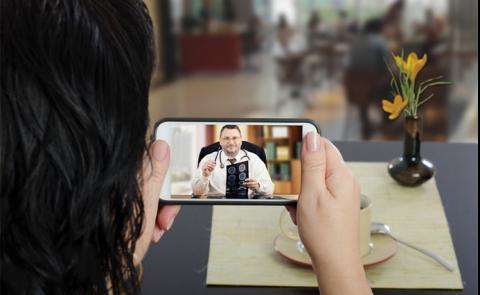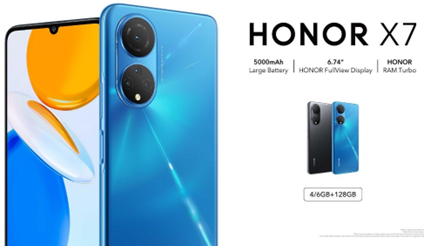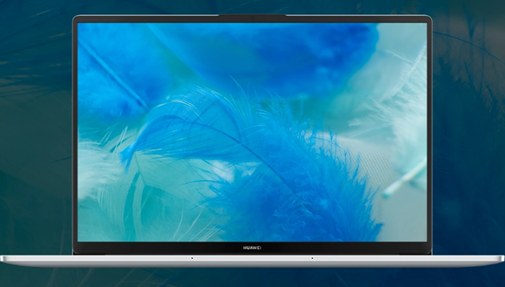Q&A: Ochsner Health taking telehealth program to all 50 states, D.C.
Before the COVID-19 pandemic sparked the telehealth boom, Ochsner Health was already using the technology to manage chronic conditions for patients across the South and is now working to provide remote patient monitoring services in all 50 states and Washington, D.C.
Take AMA on the Go
Explore new ways to stay on top of breaking news, great discussions and more—all on your tablet or mobile device.
Get ConnectedThe New Orleans-based 40-hospital system, with more than 200 clinics and urgent care centers across Louisiana, Mississippi and West Alabama, built a strong reputation for using remote services to help patients control their hypertension and diabetes—two conditions that have been found to make people more susceptible to poor outcomes from COVID-19.
Ochsner, a member of the AMA Health System Program, is collaborating with other health systems and other stakeholders—such as health plans, brokers and large employers—to provide high quality care that leads to better outcomes at lower cost.
The system also benefited from the Coronavirus Aid, Relief and Economic Security (CARES) Act, which appropriated $200 million for the Federal Communications Commission (FCC) to support health care organizations’ use of telehealth services during the public health emergency. Ochsner was awarded $1 million to serve high-risk patients and vulnerable populations in Louisiana and Mississippi, to treat COVID-19 patients, and to slow the spread of the virus.
One of the physicians leading the effort is David Houghton, MD, medical director for Ochsner’s telehealth and digital medicine programs. He is not only a leader of these programs, but he’s also a patient, having discovered in medical school that he had hypertension.
Prior to Hurricane Ida’s making landfall in late August, Dr. Houghton took time to speak with the AMA about the digital medicine program, the plans to extend it into all 50 states and the District of Columbia, how it works, and how it helps patients.
AMA: Please explain how the program got started and how it works.
Dr. Houghton: I'm a neurologist by training and, over the last five-plus years here at Ochsner, I was working fairly aggressively in the forward-facing telemedicine space, with a lot of emergency care, urgent care, and chronic-disease outpatient management—needs that we saw really accelerate dramatically during 2020—but still centered on the traditional, episodic patient-doctor relationship.
At the same time on a sort of a parallel track, my colleague, Dr. Richard Milani, who's a preventive medicine specialist, cardiologist, and our chief clinical transformation officer, and Aimee Quirk, Ochsner’s senior vice president of digital health, worked in our innovation Ochsner suite—or iO.
iO has really been our think tank for research and development of dramatically different models of care. They were the ones that created our digital medicine model.
Initially, this was created as a solution for us. We're a large health system with 32,000 employees, self-insured, plus a community around us in New Orleans and regionally across the Gulf South.
They recognized that chronic diseases like diabetes, hypertension and hyperlipidemia were the driving factors for such co-morbidities as stroke, heart attacks and really part of the unfortunate fabric of the relatively lower health state in our surrounding region. There wasn’t any type of reimbursement for these types of chronic disease-management programs at the time, so they recognized that, initially, we would need to build something to prove its value and so they created this program that was really different.
There are some other folks in this space now, and private companies such as the Livongos or the Omadas of the world that have moved into it. But when it was created by us now almost six years ago, this was a brand-new way to think about managing chronic disease.And our secret sauce is combining evidence-based medication management to accompany personalized health coaching with an ongoing data management program.
By having that actionable data at our fingertips—which is 30- or 40-fold as great in our program to what you would expect for somebody who's just getting their blood pressure drawn two, three or four times a year at their primary care offices—we’re able to not just be reactive in a faster way than what you would see in a traditional primary care role, but more importantly, be proactive. And we’re able to get patients to maintain control for their hypertension, diabetes, and now hyperlipidemia and chronic obstructive pulmonary disease.

A little more than a year ago, we embarked on that journey to create this as a service that is scalable across the country. At the same time, the first waves of COVID were roaring, and we were thinking that not only is this going to be a helpful tool for us, but we think it's certainly a helpful tool for others.
That strategy grew significantly from there, particularly focused on national and regional employers, focused on individuals in a direct-to-consumer model, focused on the payers, and focused on brokers that ended up putting together those payers and employer relationships. Now we would have the opportunity to take care of as many people as possible, and they could enjoy the same benefits as we've seen here.
Ochsner Health System pursues high tech for high patient impactAMA: There have been 20,000 people signed up for this. Is it considered a pilot program? Are you taking learnings from this and adjusting—or are you where you want it to be, and now the goal is to grow the program?
Dr. Houghton: It's certainly beyond pilot at this point, which is why, as we've continued to grow predominantly in our own backyard, we have built the sales force and the support staff on a national level.
Of the 20,000 people who have been in the program over the last several years, the vast, vast majority of those are regional.
They're patients that have been enrolled through primary care relationships through Ochsner Health, as well as our affiliated hospital systems, which number in the dozens now, across Louisiana, Mississippi, and Alabama. But there's no reason that we think that it wouldn't be completely translatable.
But also, the time is right and the appetite for this has started to grow. We've seen a lot more patients in their 30s, 40s and 50s. Obviously, they're tech savvy, but they’re also people who are really taking their own health under their control.
AMA: How did the funds from the FCC help your effort?
Dr. Houghton: We roughly cut it into thirds, into three major projects. One was to help pay for digital devices like the blood-pressure cuffs and glucometers that Bluetooth-connect to home devices like smartphones and tablets as part of a Medicaid pilot.
Another third supported similar digital devices to help support our program called Connected MOM. It takes a lot of the same ideas around digital medicine for hypertension and helps manage expectant mothers. We do more intense monitoring at home utilizing a similar model. And we've been able to demonstrate that there's a decrease in the need for them to have some of their ordinary prenatal visits.
And then the third program that we supported was for telemedicine, where we were able to put connected devices, through a partner called Tyto Care, into patients’ homes. These devices are no larger than the thermostat that you have on your wall, and it includes a thermometer, an otoscope to look in the ears, a stethoscope to listen to the heart and lungs, and a high-resolution camera for things like dermatologic views and looking at the back of the throat.
At Ochsner, innovation happens inside and outside system’s wallsAMA: What’s next?
Dr. Houghton: Within the next couple of weeks, we will have finally onboarded our complete national support team for this. So, every region, every state has a team led by a point person to be able to communicate with the employers, with the payers, with the brokers or the hospitals in those areas to be potential partners.
Forward-thinking employers and forward-thinking industries are the ones that have seemed to be the most interested, particularly ones that have a multistate footprint. We’re working with a few that are across multiple states already. And so, they look at this as a tie that binds for them to keep their employees healthy.
With our programs, that’s where the sky's the limit.We have hypertension, diabetes and hyperlipidemia as the sort of the unholy trinity of vascular disease for heart attacks, strokes, and heart failure, but the precursors of those are with pre-diabetes, metabolic syndromes, and obesity. More programs will address those.
Behavioral health is certainly on our road map as well. I think the ideal state is a health and wellness ecosystem where those are seamlessly merged together.
AMA: As these programs grow, is there a new field or alternative specialty developing as well? Will there be a remote patient monitoring society or a chronic disease digital specialist?
Dr. Houghton: I think that answer is an absolute yes. The way I foresee it, if I have the keys to the kingdom, it looks like a fellowship for training for many medical professionals. You’ll still need your residency training, but a fellowship in digital care models may be on the horizon.
I could see converging training in digital health, where pediatricians, primary care doctors, orthopedists and dermatologists all might say, “You know what? I want some additional work to really become adept at utilizing all of these new tools that, frankly, meet my expectations and our patients’ expectations to improve their health and wellness.”








